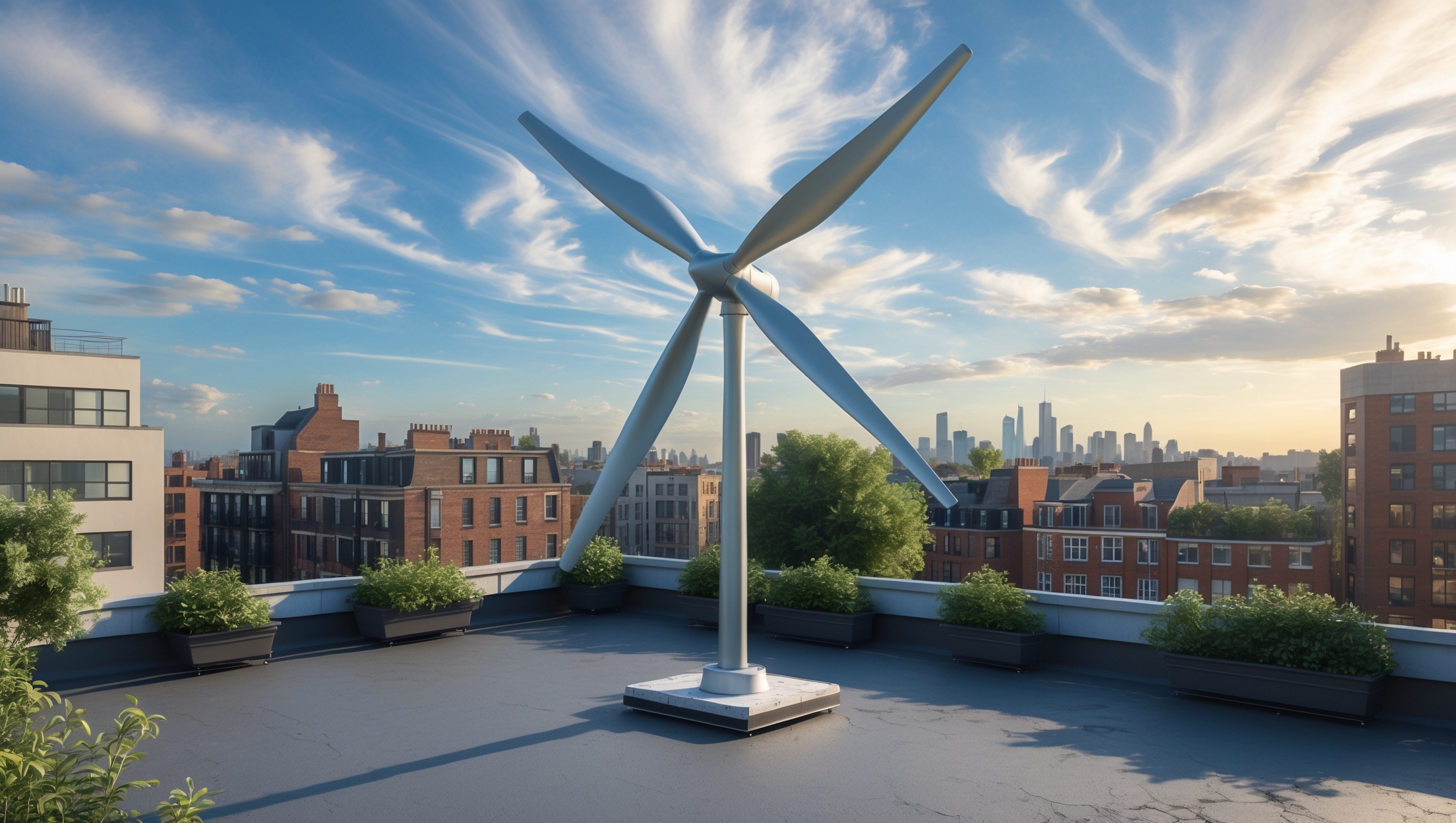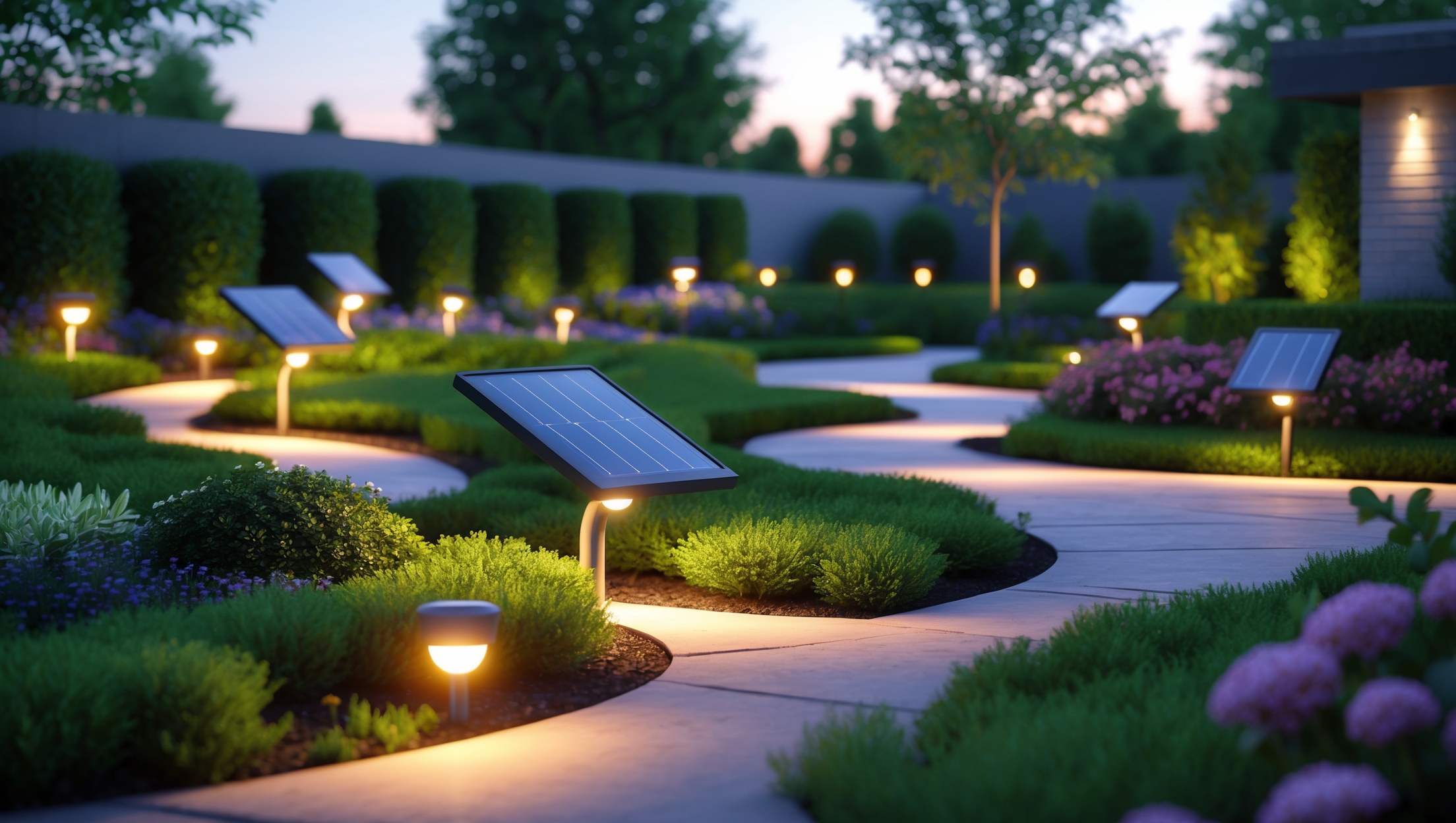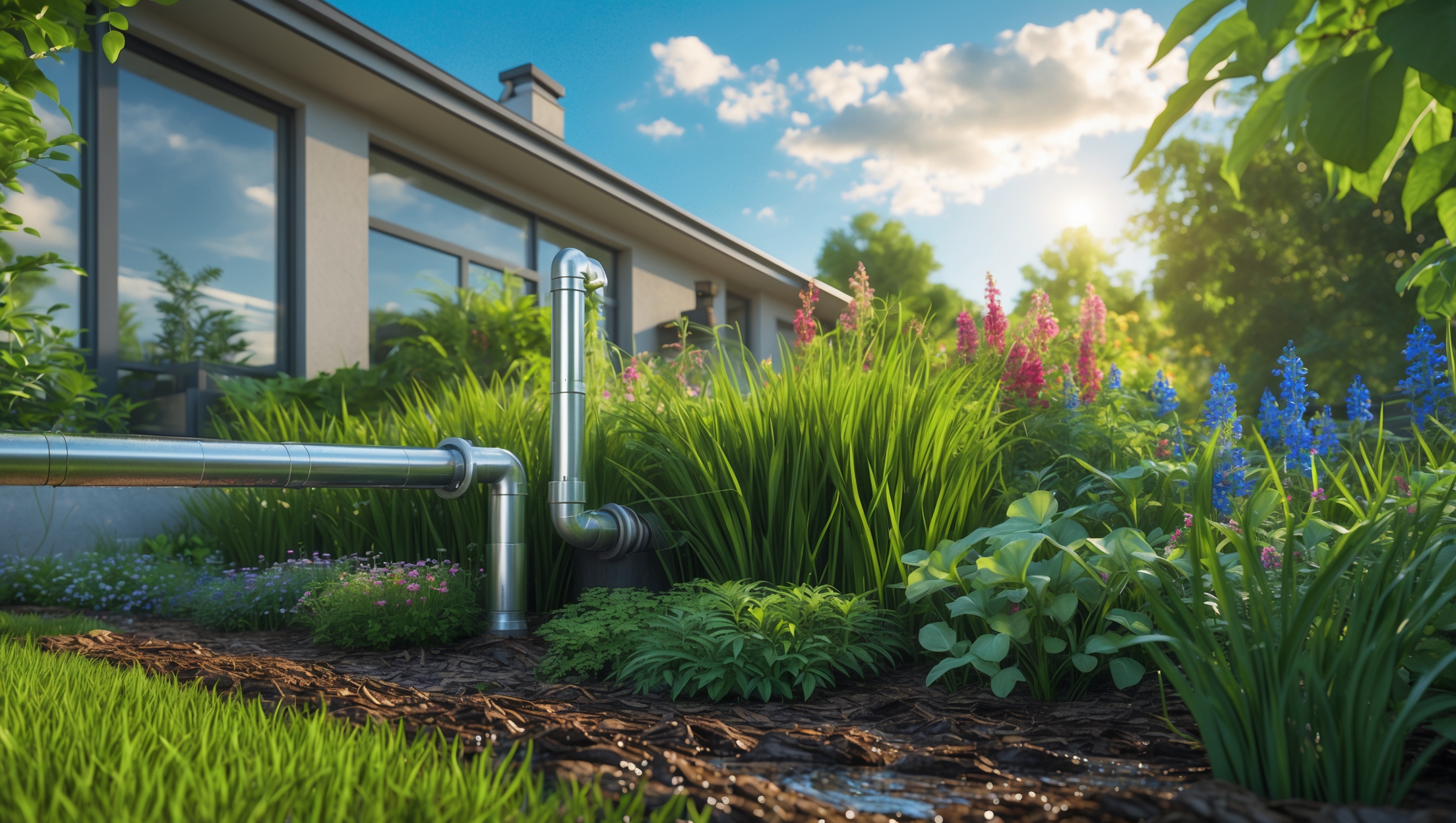Introduction: Rethinking Wind Power in the City
When most people think of wind turbines, they picture sprawling rural landscapes or windswept coastlines dotted with towering blades. The common assumption is that wind power belongs far from cities, inaccessible to urban homeowners. However, as sustainable living and green technologies evolve, small-scale wind turbines are quietly appearing atop city buildings, in backyards, and even integrated into apartment balconies. Yet, persistent myths about wind energy in urban settings continue to deter many would-be adopters. Is it really too expensive? Is the wind too weak? Are the turbines too noisy, or just plain impractical for city dwellers?
This in-depth post breaks down the most widespread misconceptions about home-scale wind power in urban environments. Drawing on real-world data, expert analysis, and practical advice, we’ll separate fact from fiction—helping you make informed decisions about harnessing wind for your home’s energy needs. Whether you’re a curious homeowner, a green tech enthusiast, or a sustainability advocate, understanding these myths is the first step toward unlocking the true potential of urban wind power.
Myth 1: Urban Areas Don’t Have Enough Wind for Turbines
Examining Urban Wind Speeds
The prevailing belief is that wind turbines require strong, constant breezes—something only rural or coastal locations can provide. However, wind patterns in cities can be surprisingly complex. Rooftops, alleyways, and street corridors often create microclimates with accelerated wind speeds due to the Venturi effect (wind speeding up as it’s funneled through narrow gaps).
While average wind speeds in urban areas (3–5 m/s) are generally lower than in open fields, modern micro-turbines are engineered to operate effectively at these velocities. Studies from the National Renewable Energy Laboratory (NREL) show that certain rooftops in major cities regularly experience wind speeds sufficient to generate meaningful energy output.
- Tip: Use a portable anemometer or consult local meteorological data to assess your specific location before investing.
- Consider turbine designs optimized for low-wind conditions, such as vertical-axis turbines.
Case Study: Rooftop Wind in Brooklyn, NY
A 2022 pilot by Brooklyn Microgrid installed a pair of 1.5kW vertical-axis turbines atop a six-story building. Over a year, the turbines delivered 1,600 kWh—enough to power the building’s common areas and emergency lighting, with performance peaking during seasonal storms.
Myth 2: Home Wind Turbines Are Too Noisy for Neighbors
Understanding Modern Turbine Design
Early wind turbines, especially large utility-scale models, were notorious for noise—sometimes exceeding 50 decibels at close range. This reputation unfairly taints today’s small-scale, residential turbines. Innovations in blade shape, materials, and mounting systems have dramatically reduced operational noise.
- Most urban micro-turbines produce 35–45 dB at a distance of 10 meters. For comparison, this is quieter than a typical conversation or city street traffic.
- Vibration-damping mounts further minimize sound transfer to building structures.
Real-World User Feedback
Feedback from urban users in Chicago and Toronto consistently rates noise as a “non-issue,” particularly when turbines are installed on rooftops or away from living spaces. In many cases, ambient city noise masks the turbine entirely.
Myth 3: Urban Wind Turbines Are Inefficient and Not Worth the Cost
Assessing Efficiency and ROI
The notion that home-scale wind turbines are a poor investment in cities often stems from comparing them to solar panels, which generally have a higher energy yield per dollar in urban settings. However, this overlooks key factors:
- Synergy with Solar: Wind often peaks at night and during storms, complementing solar generation.
- Hybrid Systems: Combining wind and solar can increase total renewable output by 20–40% over solar alone, according to the International Energy Agency (IEA).
- Grid Resilience: Wind can provide backup during grid outages caused by storms when sun isn’t available.
Cost Breakdown Example
- 1.5kW rooftop turbine: $2,500–$4,000 (including mounting and inverter)
- Annual maintenance: $50–$150
- Typical payback period: 8–12 years (with local incentives)
With local, state, and federal rebates, initial costs can be reduced by 30–50%. In several U.S. cities, property tax exemptions and net metering further improve ROI.
Myth 4: Wind Turbines Cause Structural Damage to Homes
Engineering Considerations
Some homeowners worry that installing a turbine will damage their roof or building. In reality, proper mounting and engineering are critical. Modern mounting kits distribute turbine forces across multiple joists or anchor points, preventing local stress.
- Consult a structural engineer for buildings over three stories or with unconventional roof designs.
- Regular inspections and torque checks keep mounts secure and safe.
Insurance and Permitting
Most home insurers now offer riders for micro-wind installations. Permitting may require a structural assessment, but once approved, there is no evidence of increased claims for roof damage compared to solar installations.
Myth 5: Zoning Laws and Permits Make Urban Wind Impossible
Navigating Local Regulations
It’s true that some cities have strict zoning or aesthetic rules. However, more municipalities are updating codes to support rooftop renewables, including wind. Key steps:
- Check with your city planning office for specific ordinances on height, noise, and setbacks.
- Some cities require neighbor notification or approval for visible installations.
- Historic districts may have additional restrictions—explore low-profile or building-integrated turbine designs here.
Success Stories
Seattle, Portland, and San Francisco have all approved urban wind projects in the past five years, setting precedents for other cities to follow. In many cases, advocacy by local residents has led to more wind-friendly policies.
Myth 6: Turbines Are Dangerous to Birds and Bats in Urban Settings
Wildlife Impacts in the City
While large-scale wind farms have, in some cases, impacted local bird and bat populations, small home turbines present a much lower risk. Vertical-axis turbines, in particular, have a reduced strike risk due to their slower, more visible blades. Studies in London and New York found no measurable increase in wildlife mortality near rooftop turbines compared to control sites.
- Position turbines away from known migratory routes or nesting areas when possible.
- Modern designs often include features that deter perching or nesting.
Myth 7: Maintenance Is Complex and Costly
Routine Maintenance Tasks
Another misconception is that urban wind turbines require constant attention. In reality, most maintenance is simple and infrequent:
- Visual inspection of blades and mounts every six months
- Checking electrical connections for corrosion or wear
- Lubricating moving parts annually (if required by the manufacturer)
Many modern turbines feature sealed bearings and electronics, making them nearly maintenance-free for several years. Most issues are detected early with basic monitoring systems.
Myth 8: Urban Wind Turbines Are an Eyesore
Design Innovations and Aesthetics
Today’s micro-turbines are a far cry from the industrial windmills of the past. Sleek vertical-axis designs, color-customizable blades, and compact footprints allow turbines to blend with modern architecture. Some systems are even integrated into art installations or functional rooftop features, such as pergolas or awnings.
In cities like Amsterdam and Tokyo, visible rooftop turbines have become a symbol of sustainability and innovation, often boosting property value and neighborhood pride.
Practical Steps for Urban Homeowners Considering Wind Power
1. Assess Your Site
- Measure wind speed at the intended installation height for at least a few weeks.
- Look for obstructions (taller buildings, trees) that may create turbulence.
2. Choose the Right Turbine
- Vertical-axis designs: Best for turbulent, variable city winds.
- Horizontal-axis models: More efficient but require steadier wind and more space.
3. Plan for Permits and Compliance
- Contact your city’s building department early.
- Work with a certified installer familiar with local codes.
4. Consider Hybrid Renewable Systems
- Pair wind with solar panels for more consistent year-round output.
- Use smart inverters and energy management systems to maximize efficiency.
5. Maintain and Monitor
- Schedule regular inspections (DIY or professional).
- Monitor output with a home energy app to spot issues early.
Conclusion: The Changing Face of Urban Wind Power
Urban wind power, once dismissed as impractical, is rapidly gaining ground as new technologies, improved designs, and supportive policies reshape what’s possible for city dwellers. The myths that have long held back adoption—from weak winds and noise concerns to regulatory red tape—are increasingly out of step with reality. Today’s micro-turbines are quieter, more efficient, and more aesthetically pleasing than ever, with maintenance requirements on par with other home appliances.
For many urban homeowners, wind power is not only feasible but can also play a valuable role in a diversified renewable energy strategy. By combining wind with solar, battery storage, and smart energy management, city residents can slash utility bills, boost resilience, and reduce their carbon footprint—all while demonstrating leadership in sustainable living. The key is to approach wind power with clear-eyed realism: assess your site, research your options, and engage with local regulations proactively. As cities worldwide embrace greener futures, home-scale wind power may soon become a common sight on skylines everywhere.
Don’t let outdated myths hold you back. With the right knowledge and preparation, harnessing the wind can be both practical and rewarding—even in the heart of the city.





The article talks about modern turbines working at lower wind speeds, but what happens during extended calm periods in urban areas? Do these systems require battery backup, or do most users stay connected to the main grid?
During extended calm periods when wind speeds are too low for turbines to generate power, most urban home-scale wind systems rely on backup options. Typically, users stay connected to the main grid for a consistent power supply. While battery backup is possible, it’s less common in urban settings due to cost and practical limitations. Grid connection remains the primary solution for balancing wind power intermittency in cities.
I’m curious about the practical aspects of installing a small wind turbine on a city rooftop. Are there specific requirements or structural reinforcements needed to safely mount one, given the wind patterns and building codes mentioned in the article?
Installing a small wind turbine on a city rooftop typically requires a structural assessment to ensure the building can handle the extra load and vibrations. Urban wind patterns are unpredictable, so you might need to reinforce the mounting area and use vibration-dampening materials. Local building codes often require permits and sometimes limit turbine size or height, so it’s important to check those regulations before proceeding.
I noticed the article references NREL studies about urban wind potential. Are there any online resources or tools you recommend that can help urban dwellers evaluate the true wind potential on their specific site before making a purchase?
You can use online wind resource maps and assessment tools to get a better idea of your site’s wind potential. The Department of Energy’s Wind Prospector and the Global Wind Atlas are two widely used options. Keep in mind, though, that urban wind patterns are heavily affected by local buildings and obstacles, so a professional on-site assessment is often necessary for the most accurate results.